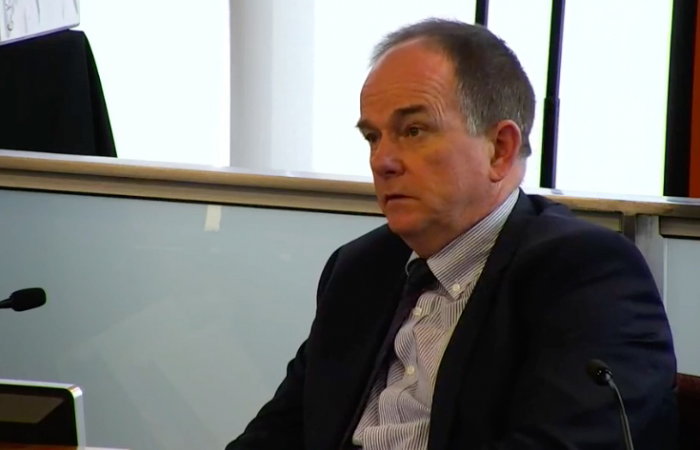
Managing the Risk of Major Accidents – Lessons from Anglo American’s Grosvenor mine accident Andrew Hopkins Emeritus professor, Australian National University
Professor Hopkins has recently published this paper which is targeted at Chief Executives of Resource Mining companies and other high risk industries.
https://openresearch-repository.anu.edu.au/bitstream/1885/287201/1/Major%20Accident%20Risk.pdf
Hopkins Chief Executives Major Accident Risk
I believe that it is an excellent analysis and poses a series of questions for those sitting in the Chief Executive and the most senior corporate positions.
In his introduction for his latest paper Managing the Risk of Major Accident Professor Hopkins states how the paper came about
This paper was prepared at the suggestion of the regulator, Resources Safety and Health, Queensland (RSHQ), to ensure that the lessons of this disaster are not forgotten. It is based on my book, Sacrificing Safety: Lessons for Chief Executives.
The target audience is senior management, both at the corporate head office, and at the business unit levels.
Given the stated focus of Managing the Risk of Major Accident and probably also because RSHQ suggested the paper, the failures the Grosvenor Ministerial Inquiry identified with RSHQ are only dealt with in passing.
I strongly suggest that the Managing the Risk of Major Accidents paper needs to be read in combination with Chapter 8 of Hopkin’s book “Sacrificing Safety: Lessons for Chief Executives”. Wolters Kluwer Australia | CCH | Sacrificing Safety: Lessons for Chief Executives
Sacrificing Safety Chapter 8 Regulators Hopkins
The decisions actions and inactions of the Anglo Coal Australia Corporate Officers were the drivers for continual methane HPI’s and the the explosions due to spontaneous combustions at Grosvenor.
The actions/inactions of RSHQ allowed Anglo Management to continue virtually unchallenged on their path to inevitable disaster.
The Grosvenor Ministerial Inquiry could only make findings and Recommendations from the information and witnesses made available.
The Ministerial Inquiry it appears quite deliberately did not hear any verbal evidence from any of the RSHQ Inspectors who actually conducted formal Inspections at the Grosvenor Mine prior to May 2020 or immediately responded to the explosion and attended the Grosvenor Mine.
The RSHQ did not tender its own Investigation Report to the Ministerial Inquiry and has still not released it due to so called pending legal action. Just like RSHQ continue to keep its Investigation Report into the 2018 North Goonyella fiasco secret and deny all RTI requests.
One thing is blatantly evident is that the processes and attitudes and secrecy of RSHQ about sharing of safety information continues to be among worst practice in the English speaking mining countries.
Some of the most pertinent points made by Professor Hopkins regarding RSHQ in Chapter 8 are quoted below
The Inquiry concluded that the inspectorate’s response to the way Grosvenor was managing the gas hazard was “inappropriate” and the “inspectorate should have been more proactive”[1]. In light of the evidence, its judgement might have been more strongly worded.
One of the most disturbing aspects of this situation is that the regulator has been blind to the abysmal failure of this vital component of Grosvenor’s safety management system. The regulator needs to ask itself, where else and how else might the management of major accident risks in Queensland coal mines be failing badly. This would require in depth study in particular cases, including review of internal audits and monitoring data. Only in this way can the regulator begin to restore confidence in the integrity of the system of principal hazard management plans on which the safety of miners depends.
A second striking finding of the Board’s inquiry was the failure of the regulator to identify the frequency of exceedances as an indicator of risk. As we saw in chapter 6, each exceedance was seen as having its own particular causes and provided these were effectively dealt with, the methane problem was taken to be under control. From this point of view, the frequency of exceedances was not a relevant consideration. Even more strikingly, for the duration of the period between exceedances, the risk is seen to be acceptable.
The board was very critical of this stance:
“It does not seem to have occurred to any of the inspectors, despite the mine’s history, that the HPIs were, or might have been, symptomatic of a greater underlying cause related to methane management”.[1]
In the boards view, if the inspectorate had paid greater attention to the frequency of HPIs at Grosvenor, they would have discovered “that the mine was engaging in poor practice, in that it was producing at a rate beyond the capacity of its gas drainage system”.[2] The inspectorate might then have used its powers to force the mine to slow production, so as not to exceed the capacity of the gas drainage system.
The regulatory failure to focus on the frequency of exceedances allowed Anglo to downplay their safety significance.

